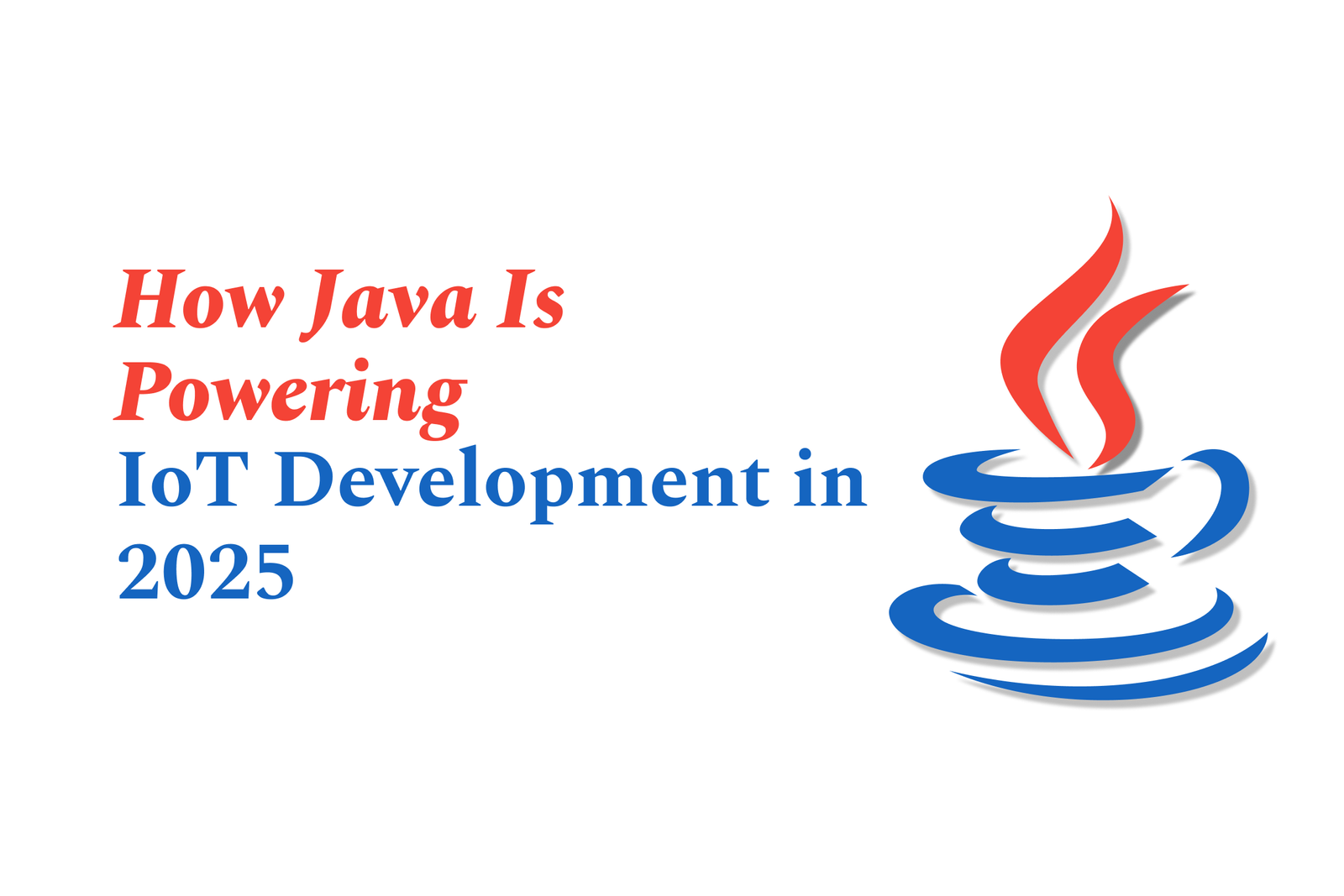How Java is Powering IoT Development in 2025
In 2025, Java powers IoT development by offering cross-platform compatibility, robust security, and scalable frameworks. Its reliability and cloud-native support enable real-time data processing and seamless integration, driving smart agriculture and industrial IoT innovations worldwide.
How Java Is Powering IoT Development in 2025
1 ) Java’s Enduring Presence in 2025
Despite being nearly three decades old, Java remains a dominant language widely used in enterprise and IoT development.
Over 90% of Fortune 500 companies utilize Java for building scalable, secure, and high performance applications.
Java’s evolving ecosystem keeps it relevant, with improvements through frequent updates and advancements such as GraalVM and Project Loom.
2 ) Key Strengths of Java in IoT Development
Cross Platform Compatibility: Java runs smoothly across various IoT devices and sensor platforms.
Reliability & Stability: Its object oriented design ensures mission critical applications operate seamlessly.
Security: Offers advanced encryption, authentication, and built in frameworks (e.g., Spring Security) to protect sensitive data.
Scalability: Handles vast volumes of sensor data, crucial for large scale IoT farming or industrial projects.
Real Time Processing: Efficiently processes real time data streams for tasks like precise automation.
3 ) Java’s Role in Smart Agriculture IoT Solutions
Java enables IoT applications for precision irrigation, crop and livestock monitoring by linking sensors, cloud platforms, and automation tools.
Example: A Java backend system collects soil moisture data and automatically triggers irrigation when thresholds are met, optimizing water usage.
Benefits include increasing crop yields while reducing resource consumption such as water by up to 30%.
4 ) Complementing Java with Node.js in IoT
Node.js supports real time, data intensive IoT applications leveraging its event driven, non blocking architecture.
Ideal for handling many simultaneous sensor connections and delivering instant notifications (e.g., weather alerts).
Used alongside Java to optimize different IoT functions—Java for backend stability and Node.js for lightweight, real time communication.
5 ) Java Frameworks Empowering Modern IoT Apps
Frameworks like Spring Boot, Micronaut, Quarkus, Jakarta EE, Vert.x, and JHipster are at the forefront for building cloud native, microservice oriented IoT solutions.
They provide rapid prototyping, strong security, scalability, and seamless cloud integration essential for IoT ecosystems.
Popular frameworks support features vital to edge computing, real time microservices, and high concurrency systems.
6 ) DevOps and Cloud Native Integration with Java
Java seamlessly integrates with DevOps tools such as Jenkins, GitLab CI/CD, Kubernetes, and Terraform, streamlining continuous integration and deployment.
Cloud native Java development supported by Spring Boot and Micronaut enables scalable, resilient distributed IoT applications.
Automated pipelines accelerate delivery of Java based IoT projects and simplify infrastructure management.
7 ) Security and Data Protection in IoT
Java includes comprehensive security mechanisms crucial for safeguarding IoT agriculture or industrial data.
Frameworks like Spring Security help manage authentication, authorization, and encryption.
This is critical as IoT systems often handle sensitive environmental and operational data requiring robust protection.
Summary:
In 2025, Java remains a foundational technology in IoT development, particularly within smart agriculture. Its platform independence, strong performance, security features, and adaptability through modern frameworks ensure it effectively powers real time, large scale IoT systems. When combined with complementary technologies like Node.js and integrated with cloud native and DevOps practices, Java continues to drive innovation and efficiency in the evolving IoT landscape.
https://justacademy.in/news-detail/java-in-blockchain-smart-contracts:-use-cases
https://justacademy.in/news-detail/react-native-expo-go-app:-what?s-new-in-2025
https://justacademy.in/news-detail/flutter-in-fintech-app-development
https://justacademy.in/news-detail/java-and-kubernetes:-tips-for-developers
https://justacademy.in/news-detail/apple?s-new-developer-documentation-portal-explained
Related Posts
Java supports GDPR and data privacy by enabling secure data handling through encryption, controlled access, and precise data management. It allows developers to minimize PII exposure, ensure data confidentiality, and design workflows that comply with data protection regulations effectively.
Java code quality tools have evolved to include advanced static analysis, integrated security checks, and AI-powered code reviews. These updates help developers detect bugs, enforce coding standards, and enhance security, streamlining the development process and improving overall code reliability.
Java remains a cornerstone in big tech companies, evolving with modern features like records, pattern matching, and virtual threads. Its robust ecosystem, enhanced performance, and growing AI integrations keep it vital for both legacy systems and innovative new projects.
Java and CI/CD pipeline optimizations streamline Java application development by automating builds, tests, and deployments. They improve efficiency through parallelization, caching, and secure secrets management, enabling faster feedback loops and more reliable, scalable software delivery.
Java supports modern cryptography standards through its flexible Java Cryptography Architecture (JCA), enabling integration of advanced algorithms like AES, EdDSA, and post-quantum tools. Libraries like Bouncy Castle offer FIPS-certified, hardware-accelerated implementations for secure development.
Java 23 enhances record patterns by enabling concise, direct destructuring of record components within pattern matching, simplifying type checks and data extraction. This improvement boosts code readability and expressiveness by reducing boilerplate in handling immutable data classes.
Java remains a top choice for mobile app backends, powering scalable, secure, and high-performance server-side solutions. Latest trends include cloud-native microservices, reactive programming, and enhanced JVM optimizations, enabling efficient, flexible, and robust mobile backend development.
Java SE 24 and LTS Java SE 21 offer enhanced features and performance, while Apache Spark 4.0.0 introduces Scala 2.13 support and advanced ML and SQL capabilities. Together, they empower developers to build scalable, high-performance data applications with modern tools.
JUnit 5 modernizes Java testing with a modular architecture, improved assertions, and seamless Java 8+ support. Beyond JUnit, tools like Mockito and AssertJ enhance mocking and assertions, creating a powerful, flexible ecosystem for writing clean, efficient Java unit tests.
Java plays a pivotal role in cloud automation tools by providing a robust, platform-independent language used to build scalable automation frameworks like Jenkins and Selenium, enabling efficient CI/CD pipelines, testing, and orchestration across diverse cloud environments.










